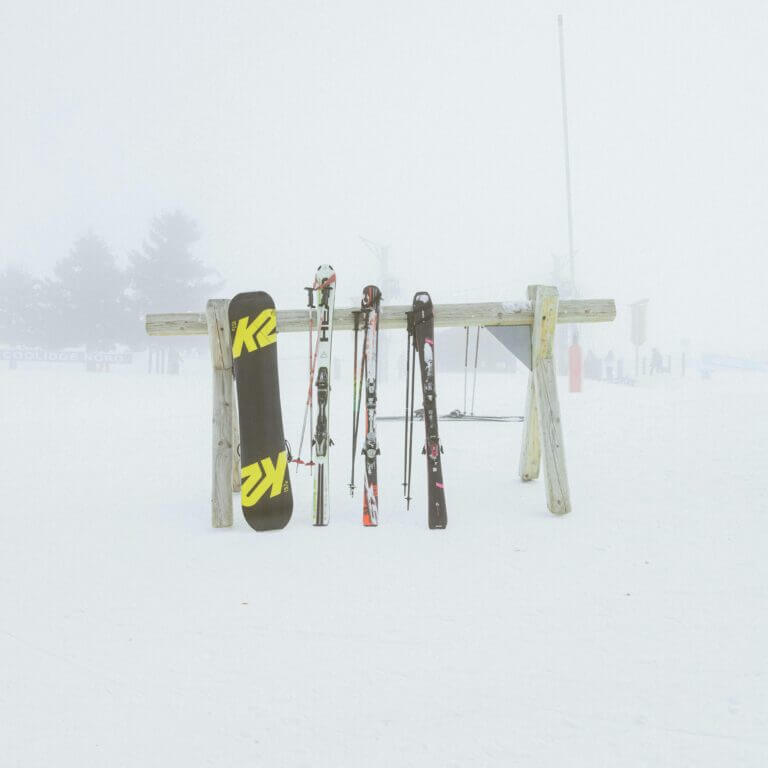Surfing – Riding the Waves
Over the years, I’ve learned a thing or two about the exhilarating sport of surfing. In this guide, I will share with you the imperative tips and tricks to help you confidently ride the waves like a pro. From choosing the right board to perfecting your stance, get ready to examine the world of surfing and make the most out of your time in the water.
Key Takeaways:
- Thrilling Experience: Surfing provides a thrilling experience as you ride the waves and perform maneuvers on the water.
- Physical and Mental Benefits: Surfing can improve physical fitness by engaging multiple muscle groups and also help with relaxation and stress relief.
- Connection with Nature: Riding the waves allows surfers to connect with nature and enjoy the beauty of the ocean environment.

Getting Started with Surfing
Choosing the Right Surfboard
The first step to getting started with surfing is choosing the right surfboard. It is necessary to select a board that matches your skill level and body type. For beginners, a soft-top longboard is often recommended as it provides stability and buoyancy, making it easier to catch and ride waves.
Selecting the Perfect Wetsuit
For those looking to start surfing, selecting the perfect wetsuit is crucial to staying warm and comfortable in the water. A wetsuit should fit snugly but not be too tight, allowing for flexibility and insulation. Consider the water temperature of the location you will be surfing in to determine the thickness of neoprene needed for your wetsuit.
When choosing a wetsuit, pay attention to the seams and zipper quality to ensure durability and minimal water entry. Investing in a good wetsuit will not only keep you warm but also protect your skin from chafing and irritation while surfing.
Understanding Surfing Terminology
While getting started with surfing, it is important to familiarize yourself with common surfing terminology. Phrases like “line-up,” “drop-in,” and “barrel” are frequently used in surf culture and understanding their meanings can help you communicate with other surfers and improve your overall surfing experience.
Choosing the right surfboard, wetsuit, and understanding surfing terminology are necessary steps to take when getting started with surfing. By equipping yourself with the proper gear and knowledge, you can confidently ride the waves and enjoy the thrilling experience of surfing.
Mastering the Basics of Surfing
Assuming you are new to the sport, mastering the basics of surfing is crucial to your success in the water. From learning how to paddle effectively to catching your first wave, these foundational skills will set the stage for your surfing journey.
How to Paddle Effectively
Some may underestimate the importance of proper paddling technique, but it is key to navigating the waves efficiently. To paddle effectively, lie flat on your stomach on the surfboard and use your arms to pull yourself through the water. Keep your fingers together and cup your hands, pushing down and back in a freestyle motion. Remember to kick your feet to help propel yourself forward.
Tips for Catching Your First Wave
One of the most thrilling moments in surfing is catching your first wave. To increase your chances of success, start by positioning yourself correctly on the board, lying flat with your chest centered. As the wave approaches, paddle with determination to match its speed. When you feel the wave lift you up, pop to your feet in one smooth motion and engage your core for balance.
- Recognizing the right wave to catch is necessary for beginners.
Understanding
Factors Affecting Wave Height and Speed
An important aspect of surfing is understanding the factors that affect wave height and speed. Wave height is influenced by the strength of the wind and the distance it travels over open water. Additionally, the underwater topography can impact wave speed, with shallower waters causing waves to break sooner.
- Perceiving the relationship between these factors will help you anticipate wave conditions.
Another
Factors Affecting Wave Height and Speed
Mastering the basics of surfing also involves understanding how factors like swell direction and wave period can affect wave height and speed. Swell direction determines the angle at which waves approach the shore, while wave period indicates the time interval between waves. By analyzing these variables, you can position yourself strategically in the lineup to catch the best waves.
- Perceiving the nuances of wave dynamics will allow you to make informed decisions while surfing.
Improving Your Surfing Technique
How to Stand Up and Balance on the Board
Even if you’ve just started surfing, mastering the skill of standing up and finding the right balance on your board is crucial. To do this, start by paddling into a wave and as it begins to push you forward, place your hands on the board under your shoulders and push yourself up into a push-up position. Next, bring your front foot forward and plant it on the board, followed by your back foot. Make sure your feet are aligned with your shoulders and parallel to the edges of the board to maintain stability.
Tips for Turning and Controlling Your Speed
Controlling your speed and being able to execute smooth turns is imperative for maneuvering through the waves effectively. To achieve this, focus on shifting your weight and using your body to lean into turns. Additionally, try angling your board slightly towards the wave while using your back foot to steer the board in the desired direction. This will help you maintain control and adjust your speed as needed.
- Use your body weight to lean into turns
- Angle your board towards the wave for better control
Factors Influencing Wave Direction and Break
It’s imperative to understand the various factors that influence wave direction and how they break to anticipate the best surfing spots. Wave direction is primarily influenced by the geography of the coastline, underwater topography, and prevailing wind patterns. These factors collectively determine the angle at which waves approach the shore and how they break, creating ideal surfing conditions.
- Geography of the coastline plays a significant role in wave direction
- Underwater topography affects how waves break near the shore
To further improve your understanding of wave direction and ensuring a more successful surf session, assuming that the angle of the coastline will influence how waves refract towards the beach. This can help you position yourself in the water to catch the best waves and ride them effectively.
- Assume that the angle of the coastline affects wave refraction

Advanced Surfing Techniques
- How to Perform Basic Tricks and Maneuvers
There’s nothing quite like the feeling of riding a wave and performing tricks and maneuvers on your surfboard. Whether it’s executing a sharp cutback or landing an aerial, mastering basic tricks can take your surfing to the next level. To perform basic tricks and maneuvers, you’ll need to practice regularly and focus on your technique. Make sure to shift your weight properly, use your arms for balance, and stay relaxed to flow with the wave effortlessly.
As you progress, you can start experimenting with more advanced maneuvers like floaters, snaps, and even barrels. Be mindful of, practice makes perfect, so don’t get discouraged if you don’t nail a trick on your first try. Keep pushing yourself, and with dedication and perseverance, you’ll soon be able to pull off impressive moves on the waves.
Tips for Reading Waves and Anticipating Breaks
- Position yourself where the waves are breaking, not where they have already broken
While reading waves and anticipating breaks can seem challenging at first, with time and experience, you’ll start to pick up on subtle cues that will help you predict wave patterns more accurately. Look for signs like the shape of the wave, the wind direction, and the water’s texture to anticipate when and where a wave will break. By positioning yourself strategically and adjusting your timing, you can maximize your chances of catching the perfect wave.
- The more time you spend in the water, the better you’ll become at reading waves and anticipating breaks
With practice, you’ll develop a keen eye for reading waves and understanding how different factors like swell direction, tides, and wind affect wave formation. Pay attention to how the waves break at different spots along the beach and experiment with your positioning to find the sweet spot where you can catch the best waves consistently.
Factors Affecting Surfing Performance in Different Conditions
- Adjust your surfboard volume based on the wave conditions
The better you understand the factors that can affect your surfing performance in varying conditions, the more adaptable and versatile you’ll become as a surfer. Factors like wave size, shape, speed, and wind direction all play a significant role in determining the type of board and technique you should use. By paying attention to these variables and making the necessary adjustments, you can optimize your surfing performance and make the most out of any wave conditions.
- After mastering the basics, challenge yourself by surfing in different conditions
The more you expose yourself to different wave conditions, the more you’ll learn and grow as a surfer. Don’t be afraid to venture out of your comfort zone and try surfing in challenging conditions like bigger waves, reef breaks, or offshore winds. Embrace the opportunity to expand your skills and push your limits, as overcoming these challenges will ultimately make you a more skilled and confident surfer.
Advanced surfing techniques require dedication, perseverance, and a willingness to push yourself outside of your comfort zone. By continually challenging yourself and seeking new experiences, you’ll not only enhance your surfing skills but also develop a deeper connection with the ocean and the sport. Be mindful of, surfing is a journey of continuous improvement, so embrace the waves, keep learning, and enjoy the ride!
Safety Precautions and Emergency Procedures
How to Identify and Avoid Hazards in the Water
Unlike swimming in a pool, the ocean presents unique challenges and hazards. It’s necessary to be aware of your surroundings and potential dangers when surfing. I recommend familiarizing yourself with the beach conditions, such as the presence of rocks, reefs, or sandbars. Look out for warning signs or flags indicating strong currents, marine life, or dangerous weather conditions.
Tips for Dealing with Rip Currents and Wipeouts
While surfing, encountering rip currents and wipeouts is inevitable. To navigate these situations safely, it’s crucial to remain calm and not panic. If caught in a rip current, try to swim parallel to the shore until you are out of its pull. When experiencing a wipeout, protect your head by covering it with your arms and wait for the turbulence to subside before resurfacing.
- Avoid fighting against the current.
- Signal for help if needed.
To have a safe surfing experience, always be prepared for the unexpected. It’s crucial to understand the factors that can influence your surfing session’s safety. Any sudden changes in weather, water conditions, or tides can significantly impact your surfing experience, so it’s necessary to stay informed and adapt accordingly.
- Always check the weather forecast before heading out.
- Be mindful of any changes in water depth or swell direction.
Staying Fit and Healthy for Surfing
Not only is surfing an exhilarating and fun sport, but it also requires a certain level of fitness and health to truly enjoy the experience. To improve your performance on the waves, it’s imperative to focus on your flexibility and strength.
How to Improve Your Flexibility and Strength
If you want to enhance your surfing skills, incorporating regular stretching and strength training exercises into your routine can be highly beneficial. Stretching exercises such as yoga or Pilates can help increase your flexibility, allowing you to maneuver your body more easily on the board. Strength training, on the other hand, can help improve your paddling power and stability while riding the waves.
Tips for Preventing Injuries and Maintaining Endurance
The key to a long and successful surfing session is to prevent injuries and maintain your endurance levels. To achieve this, I recommend the following tips:
- Warm up properly before hitting the waves to reduce the risk of muscle strains or sprains.
- Stay hydrated throughout your session to keep your energy levels up and prevent fatigue.
- Listen to your body and take breaks when needed to avoid overexertion and potential injuries.
Recognizing the signs of exhaustion or dehydration is crucial in maintaining your endurance and staying safe in the water.
The strength and endurance required for surfing can take a toll on your body if not properly maintained. Ensuring you are physically prepared for the demands of the sport is imperative to prevent injuries and enjoy your time in the water.
Final Words
Hence, surfing is not just a sport; it is a lifestyle that allows you to connect with nature, challenge yourself, and experience pure joy out on the water. From the thrill of catching your first wave to the peaceful serenity of gliding across the water, surfing provides endless opportunities for personal growth and self-expression. So grab your board, hit the beach, and start riding those waves – you won’t regret it!
FAQ
Q: What equipment do I need for surfing?
A: To surf, you will need a surfboard, a leash to attach the board to your ankle, a wetsuit (depending on the water temperature), and wax to provide traction on the board.
Q: How do I catch a wave while surfing?
A: To catch a wave, you will need to paddle out to the lineup where the waves are breaking. Once you spot a wave you want to catch, start paddling towards the shore, timing your paddle so that you catch the wave just as it starts to crest. Once you feel the wave pick you up, you can pop up onto your feet and ride the wave.
Q: How do I improve my surfing skills?
A: To improve your surfing skills, practice regularly and take lessons from experienced surf instructors. Work on your paddling technique, learn how to read the waves, and focus on improving your balance and coordination. Watching surfing videos and studying how more experienced surfers ride the waves can also help you improve your skills.







